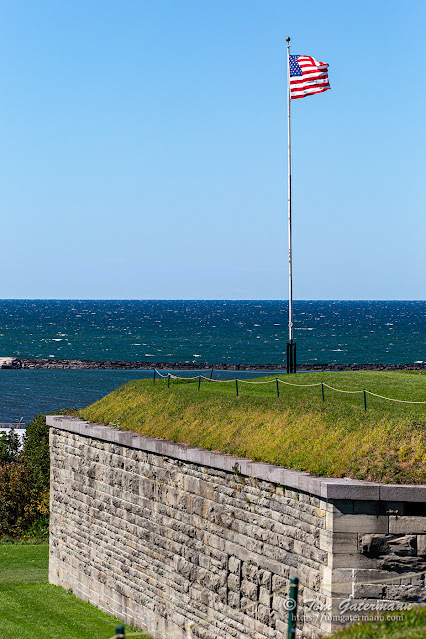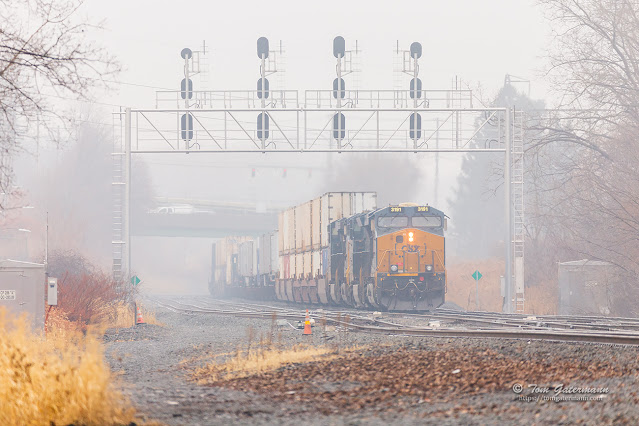
Back in September of last year, my family took a day trip up to Oswego, New York, to see Fort Ontario. Oswego, New York, is situated on the southeastern side of Lake Ontario, about forty miles north of Syracuse, New York. The star-shaped fort sits on a bluff offering great views of Lake Ontario.
According to the State of New York's Parks Department the fort is the fourth fort to stand on the site and was built in the 1840s. It was occupied by the United States Army from the time it was built until after World War II. During the war, the fort served as the only refugee camp in the United States for victims of the Nazi Holocaust.
 |
| A section of Fort Ontario's stone outer defensive wall.
Fort Ontario's outer defensive wall is constructed of stone blocks and as mentioned earlier, forms a five-point star. Behind the stone walls are the earthen ramparts, with an earthen parapet atop. When up on the rampart and parapet you can take in some great views of Lake Ontario from the fort. |
 |
| A sliver of Lake Ontario can be seen behind the officers' quarters buildings. |
Inside the fort are four main buildings: the enlisted quarters, two officers' quarters, and the storehouse. In the photograph above, the view is from the balcony of the enlisted quarters looking across at the officer's buildings. Behind them you can see the rampart and parapet, with Lake Ontario, beyond. The photograph below shows a tighter view of the rampart and parapet behind one of the officers' buildings.
 |
| Looking toward the rampart and parapet behind one of the officers' buildings. |
There are pathways, gun casements, and rifle galleries below the earthen rampart. In the photograph above, an entrance to a pathway behind the officers' building can be seen on the right side of the building. Also, in the lower right corner of the photograph is a sliver of a stone doorway that leads to a stairway that descends down to a rifle gallery.
As mentioned earlier, the current fort is the fourth fort to be built on the site. The original fort on the site was built by the British in 1755 and was named the Fort of the Six Nations. This fort was destroyed by the French in 1756, during the French and Indian War. The British built a second fort in 1759, which was subsequently destroyed during the American Revolutionary War. Then British built a third fort on the site during the American Revolutionary War, which the Americans got control of in 1796. During the War of 1812, the British got their turn to destroy the fort that they had built.
 |
| A cannon sitting atop the fort's northwestern rampart overlooking Lake Ontario. |
Photographs taken on September 26, 2021.



 Back in September of last year, my family took a day trip up to Oswego, New York, to see Fort Ontario. Oswego, New York, is situated on the southeastern side of Lake Ontario, about forty miles north of Syracuse, New York. The star-shaped fort sits on a bluff offering great views of Lake Ontario.
Back in September of last year, my family took a day trip up to Oswego, New York, to see Fort Ontario. Oswego, New York, is situated on the southeastern side of Lake Ontario, about forty miles north of Syracuse, New York. The star-shaped fort sits on a bluff offering great views of Lake Ontario. 






What a neat place! Never got to that one while we lived in NY. Guess we didn't make it that far north. :-) Nice shots to see it now.
ReplyDeleteThe fort is a really nice place to visit, even for my youngsters who can't appreciate the historical significance yet. The views of the lake and lighthouse are really nice to.
Delete